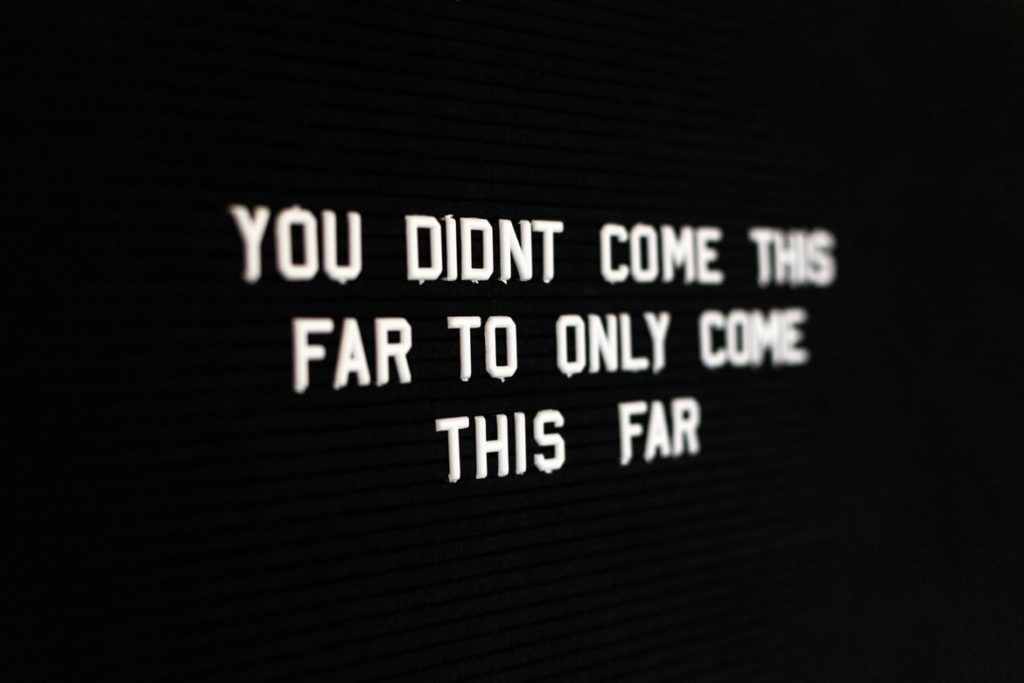Yoga Teachers: Your Intention Needs a Marketing Plan
There’s no doubt intention setting is a powerful tool. But if you’re trying to earn a living from that Intention, it better be fortified with a thoughtful and authentic Marketing Plan.

An Intention isn’t enough
Before stepping into teaching Yoga as a profession, you may have set an intention to serve others, or to share healing. You may even have quit your corporate job with an intention to follow your bliss, your joy, or your heart. (Hand raised – I set this one too!)
Don’t get me wrong. Intentions are valuable. They direct our focus so that when opportunities arise we recognize them.
But I’ve learned that intentions aren’t enough. On their own, setting an intention can invite us to wait passively for results. We may trust that the Universe will just present us with the right opportunities, and we don’t need to take risks.
A more useful approach is seeing intentions as the lights on the path to our dreams. In contrast, a marketing plan is how we put on our boots, load up our backpacks and get on the road towards those dreams.
Why is a Marketing Plan Essential for Yoga Teachers?
Wait a second, you may be thinking. Isn’t marketing and advertising kind of dishonest and gross?
To be honest, I’ve used to think the same way. I’ve also been a communications professional for more than 20 years – writing copy for financial websites, marketing material for giant pensions companies, and advertorials for big profit developers. Marketing can definitely be pretty icky. At times, I’ve had to find a new job because my work didn’t coincide with my values as a Yoga practitioner or as a Yoga teacher.
But for the last three years I’ve looked after the digital marketing for a Yoga nonprofit. And I’ve realized that marketing is simply a way of delivering a message. If your intention is to deliver a message of truth into the hands of people who need it, then marketing is actually a force for good. Imagine if all the creativity that went into promoting unnecessary products went into encouraging people to fight climate change? Or connect with themselves? Or care for each other? It’s not marketing that’s the problem. It’s the intention.
You need both an Intention and a Marketing Plan

For example, the first section in a typical marketing plan is branding and niche. In “Yoga speak”, we can call this section Identity and Intention. In other words, who are you as a Yoga teacher, and what do you intend to bring to your students?The difference is specifics.
A mindful intention might sound like, “I want to teach Yoga for a living in a way that feels true to me.” Or “I want to help people heal.”
A Yoga Marketing Plan asks you to get more specific about that Intention. What’s true to you? Which people are you going to help? Heal from what?
The more details that you include in your visualization, the more likely it is that you’ll recognize the right opportunities for you.
5 Ways a Yoga Marketing Plan supports your Teaching Dream

1. Your business will be sustainable.
The truth is, your students need you to be as good at managing a business as you are at teaching yoga. Otherwise you’ll burn out emotionally and financially. And they’ll miss out on your unique combination of knowledge and lived experience that makes you the perfect teacher for them.
With a thoughtful marketing plan, your students will find the teacher they need, and you’ll get to keep showing up for them year after year.
2. You’ll save precious time and money.
When you’re fresh out of Yoga teacher training, you’re probably taking any job you can get just for the experience. But as you grow as a teacher, you’ll probably want to evaluate which classes are worth your time. Your marketing plan provides that filter.
If you set a goal in a Yoga marketing plan to support seniors in mind and body health, then when you see an ad for a hot yoga vinyasa teacher at $40/hour and another for a yoga sub at an assisted living facility at $35 for one session, you’ll pick the second.
How does that save time and money? The second one propels you toward the goal you wrote down. You’re gathering valuable experience in your chosen market, and probably making a great connection.
If you don’t have the intention written out in a specific way like you would in a marketing plan, you’re more likely to pinball toward the higher paying gig, reasoning that the Universe is offering an opportunity to fulfill your Intention. You might even think that it’s better to leave your Intention more general, so that you can take any opportunities that come along.
In my experience, this approach leads to burnout. The hot Vinyasa class may pay more, but it doesn’t light you up inside. So you get bored and fed up with teaching. The students feel this and respond with less enthusiasm, or by not showing up at all. And you start to question whether you have any business teaching at all.
3. Writing a Marketing Plan Helps You See Possibilities
What if you’re not ready to get specific? You don’t know if you’d rather teach hot Vinyasa or Yoga for Seniors. Don’t worry. A Marketing Plan sounds linear, but you actually write it backwards.
The Identity & Intention statement appears first, but everybody leaves it blank and goes back after filling out the rest. And by everyone, I mean all the Yoga Teachers, and the executives at Coca-Cola, Apple, and Tesla.
Before settling on your one-sentence intention, you get to use your creative thinking tools. Brainstorming, mind-mapping, vision boards, meditation. Whatever tools help you to access your inner wisdom.
It’s only after all the messy work of seeing ALL the possibilities that you can choose the path meant for you. Just like in Yoga, you don’t suddenly do a challenging arm balance just because you want to. Or reach enlightenment just because you want to.
I wouldn’t equate writing a Marketing Plan with suffering necessarily. However, it does involve some discomfort, just like anything that requires authenticity. And just like Yoga, you might discover that the prize at the end isn’t at all what you thought it was going to be.
4. Your Promotions will be more Authentic
One mistake I hear Yoga teachers make is assuming that spontaneously throwing content up on social media or websites makes it more authentic. I used to make this mistake myself – thinking that if the words didn’t flow straight from my head to the screen that they were somehow censored.
Instead of censored, substitute the word “intentional”. You need to be intentional about what you’re putting out there. Otherwise, you risk saying things you don’t really mean, or giving an impression about your class that isn’t accurate.
However, if you think in advance about your ultimate goal and then carefully craft a message that is accessible to potential students, you’ve done more than blurt out spontaneity. You’ve shared your truth in a way that other people can understand.
For example, you’d explain the power of meditation differently to a group of tweens than you would to a class full of Yoga teachers, wouldn’t you? The vocabulary would be different. The depth of explanation would be different. You’d choose the examples and anecdotes most likely to resonate with each group. In the end, both explanations are true, but totally different.
Spending time working out a Marketing Plan ensures that the truth you’re trying to convey is getting across to your intended students
5. A Marketing Plan Directs Your Creative Flow
Let’s say you understand your students really well. You know the language they use, and what interests them about life and Yoga. But in your efforts to get eyes on a social post, you’re not going to throw out a clever meme or headline just because you know it will intrigue your target audience.
That wouldn’t be genuine. Instead you’re going to look back at the goals and ideals you wrote in your marketing plan. You’ll use these as a filter to evaluate all your creative promotional ideas. If they express your truth and appeal to the students you want to attract, then they make it through. If they’re only appealing, funny or click-bait-y, they don’t make the cut.
Having this filter written down in a plan keeps all your promotions in line with the reputation you’re trying to build as a Yoga teacher. Potential students will understand what you’re really about. Your marketing materials will give a realistic impression of your teaching style – whether that comes with a big dose of comedy or a big helping of Sanskrit.
A Yoga Marketing Plan turns Intention into Action

It’s true that some marketing is tacky, pushy, and sales-y. But yours won’t be. Why? Because your Yoga Marketing Plan begins with a solid understanding of your Identity and a heart-felt Intention. Every choice you make, every promotion you design, gets to go through your Identity and Intention filter first.
On the other hand, it’s true that some Yoga people are flaky and a little too go-with-the-flow. Some do set Intentions that are so general, anything counts as success. Unfortunately, many of those wonderful Yoga teachers don’t get to live their dream of teaching for a living. Sadly, they don’t earn enough to sustain themselves.
But if you back up your intention with a truly thoughtful Yoga marketing plan, that isn’t going to happen to you. You’ll have marketing materials that you feel good about it. And more importantly, your marketing is going to reach your ideal students and make them feel good about themselves too.
If you’re wondering how to actually get down to business and make this stellar plan, read my next post explaining the six essential elements in a Yoga Teacher’s Marketing Plan.

Or download my free Yoga Marketing Plan template and get started right away.
Read my next blog post to find out what to include in a great Yoga Marketing Plan.

Trackbacks/Pingbacks